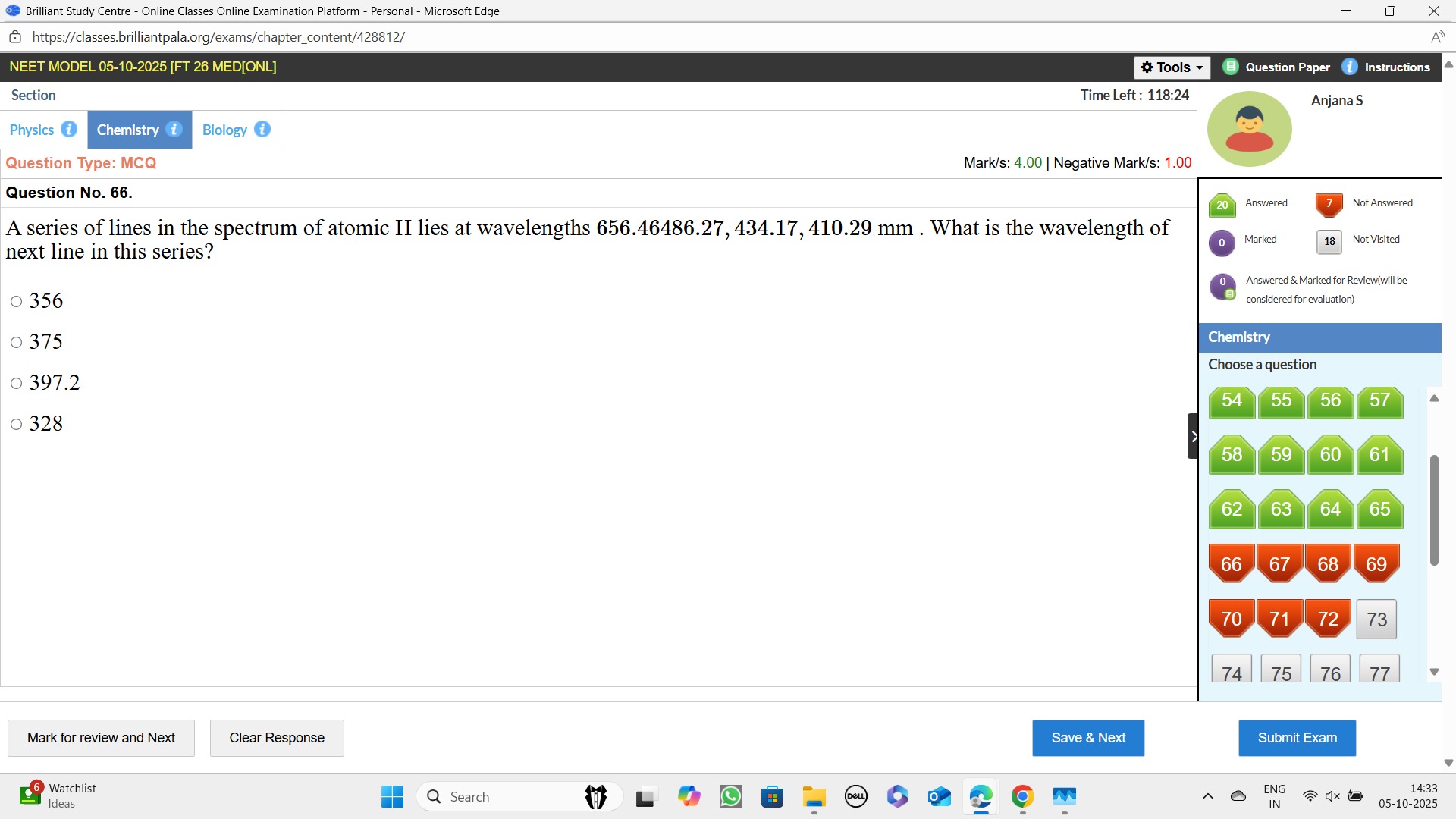Question
Question: A series of lines in the spectrum of atomic H lies at wavelengths 656.46486.27, 434.17, 410.29 mm . ...
A series of lines in the spectrum of atomic H lies at wavelengths 656.46486.27, 434.17, 410.29 mm . What is the wavelength of next line in this series?

356
375
397.2
328
397.2
Solution
The given wavelengths (656.46 nm, 486.27 nm, 434.17 nm, 410.29 nm) correspond to the Balmer series of the hydrogen atom, where transitions end at the energy level nf=2. These lines are from transitions originating from higher energy levels ni=3,4,5,6 respectively. The Rydberg formula for the wavelength λ of spectral lines in a hydrogen atom is: λ1=RH(nf21−ni21) where RH is the Rydberg constant.
For the Balmer series (nf=2), the wavelengths are for ni=3,4,5,6. The question asks for the wavelength of the next line in this series, which corresponds to the transition from the next higher energy level, ni=7, to nf=2.
Using the first line λ1=656.46nm for ni=3 and nf=2, we can determine the effective Rydberg constant for this problem: RH=λ11(nf21−ni21)−1=656.46nm1(221−321)−1 RH=656.46nm1(41−91)−1=656.46nm1(369−4)−1=656.46nm1(365)−1 RH=5×656.4636nm−1=656.467.2nm−1≈0.0109678nm−1
Now, we calculate the wavelength for the next line, corresponding to the transition from ni=7 to nf=2: λnext1=RH(nf21−ni21)=RH(221−721) λnext1=RH(41−491)=RH(19649−4)=RH(19645) Substitute the value of RH: λnext1=(0.0109678nm−1)×(19645)≈0.0109678×0.2295918nm−1≈0.0025177nm−1 λnext=0.0025177nm−11≈397.17nm The calculated wavelength is approximately 397.17 nm. Comparing this with the given options, 397.2 nm is the closest value.
The series limit for the Balmer series is when ni→∞, giving λlimit=RH4≈0.01096784≈364.7nm. Options 356 nm and 328 nm are below this limit and thus are not possible for the Balmer series.
